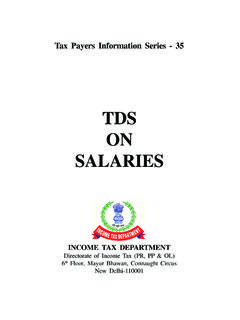Transcription of TAX ON SHORT-TERM CAPITAL GAINS
1 [As amended by Finance Act, 2018] TAX ON SHORT-TERM CAPITAL GAINS Introduction Gain arising on transfer of CAPITAL asset is charged to tax under the head CAPITAL GAINS . Income from CAPITAL GAINS is classified as short Term CAPITAL GAINS and Long Term CAPITAL GAINS . In this part you can gain knowledge about the provisions relating to tax on short Term CAPITAL GAINS . Meaning of CAPITAL GAINS Profits or GAINS arising from transfer of a CAPITAL asset are called CAPITAL GAINS and are charged to tax under the head CAPITAL GAINS . Meaning of CAPITAL Asset CAPITAL asset is defined to include: (a) Any kind of property held by an assesse, whether or not connected with business or profession of the assesse. (b) Any securities held by a FII which has invested in such securities in accordance with the regulations made under the SEBI Act, 1992.
2 However, the following items are excluded from the definition of CAPITAL asset : i. any stock-in-trade (other than securities referred to in (b) above), consumable stores or raw materials held for the purposes of his business or profession ; ii. personal effects, that is, movable property (including wearing apparel and furniture) held for personal use by the taxpayer or any member of his family dependent on him, but excludes (a) jewellery; (b) archaeological collections; (c) drawings; (d) paintings; (e) sculptures; or (f) any work of art. Jewellery" includes (a) ornaments made of gold, silver, platinum or any other precious metal or any alloy containing one or more of such precious metals, whether or not containing any precious or semi-precious stones, and whether or not worked or sewn into any wearing apparel; (b) precious or semi-precious stones, whether or not set in any furniture, utensil or other article or worked or sewn into any wearing apparel; iii.
3 Agricultural Land in India, not being a land situated: [As amended by Finance Act, 2018] a. Within jurisdiction of municipality, notified area committee, town area committee, cantonment board and which has a population of not less than 10,000; range of following distance measured aerially from the local limits of any municipality or cantonment board: i. not being more than 2 KMs, if population of such area is more than 10,000 but not exceeding 1 lakh; ii. not being more than 6 KMs , if population of such area is more than 1 lakh but not exceeding 10 lakhs; or iii. not being more than 8 KMs , if population of such area is more than 10 lakhs. Population is to be considered according to the figures of last preceding census of which relevant figures have been published before the first day of the year.
4 Iv. 61/2 per cent Gold Bonds,1977 or 7 per cent Gold Bonds, 1980 or National Defence Gold Bonds, 1980 issued by the Central Government; v. Special Bearer Bonds, 1991; vi. Gold Deposit Bonds issued under the Gold Deposit Scheme, 1999 or deposit certificates issued under the Gold Monetisation Scheme, 2015. Following points should be kept in mind: The property being CAPITAL asset may or may not be connected with the business or profession of the taxpayer. Bus used to carry passenger by a person engaged in the business of passenger transport will be his CAPITAL asset. Any securities held by a Foreign Institutional Investor which has invested in such securities in accordance with the regulations made under the Securities and Exchange Board of India Act, 1992 will always be treated as CAPITAL asset, hence, such securities cannot be treated as stock-in-trade.
5 Illustration Mr. Kumar purchased a residential house in January, 2018 for Rs. 84,00,000. He sold the house in April, 2018 for Rs. 90,00,000. In this case residential house is a CAPITAL asset for Mr. Kumar and, hence, the gain of Rs. 6,00,000 arising on account of sale of residential house will be treated as CAPITAL GAINS and will be charged to tax under the head CAPITAL GAINS . Illustration Mr. Kapoor is a property dealer. He purchased a flat for resale. The flat was purchased in January, 2018 for Rs. 84,00,000 and sold in August, 2019 for Rs. 90,00,000. In this case, Mr. Kapoor is dealing in properties is his ordinary business. Hence, flat so purchased by him would form part of stock-in-trade of the business. In other words, for Mr. Kapoor flat is not a CAPITAL asset and, hence, gain of Rs. 6,00,000 arising on account of sale of flat will be charged to tax as business income and not as CAPITAL GAINS .
6 Meaning of SHORT-TERM CAPITAL asset and long-term CAPITAL asset For the purpose of taxation, CAPITAL assets are classified into two categories as given below : [As amended by Finance Act, 2018] SHORT-TERM CAPITAL Asset Long-Term CAPITAL Asset Any CAPITAL asset held by the taxpayer for a period of not more than 36 months immediately preceding the date of its transfer will be treated as SHORT-TERM CAPITAL asset. However, in respect of certain assets like shares (equity or preference) which are listed in a recognised stock exchange in India ( listing of shares is not mandatory if transfer of such shares took place on or before July 10, 2014), units of equity oriented mutual funds, listed securities like debentures and Government securities, Units of UTI and Zero Coupon Bonds, the period of holding to be considered is 12 months instead of 36 months Note: Period of holding to be considered as 24 months instead of 36 months in case of unlisted shares of a company or an immovable property being land or building or both.
7 Any CAPITAL asset held by the taxpayer for a period of more than 36 months immediately preceding the date of its transfer will be treated as long-term CAPITAL asset. However, in respect of certain assets like shares (equity or preference) which are listed in a recognised stock exchange in India ( listing of shares is not mandatory if transfer of such shares took place on or before July 10, 2014), units of equity oriented mutual funds, listed securities like debentures and Government securities, Units of UTI and Zero Coupon Bonds, the period of holding to be considered is 12 months instead of 36 months Note: Period of holding to be considered as 24 months instead of 36 months in case of unlisted shares of a company or an immovable property, being land or building or both.
8 Illustration (1) Mr. Kumar is a salaried employee. In the month of April, 2017 he purchased gold and sold the same in December, 2018. In this case gold is CAPITAL asset for Mr. Kumar. He purchased gold in April, 2017 and sold it in December, 2018, , after holding it for a period of less than 36 months. Hence, gold will be treated as short Term CAPITAL Asset. Illustration (2) Mr. Raj is a salaried employee. In the month of April, 2015 he purchased gold and sold the same in August, 2018. In this case gold is CAPITAL asset for Mr. Raj. He purchased gold in April, 2015 and sold it in August, 2018, , after holding it for a period of more than 36 months. Hence, gold will be treated as Long Term CAPITAL Asset. Illustration (3) Mr. Kumar is a salaried employee. In the month of April, 2018 he purchased equity shares of SBI Ltd.
9 (listed in BSE) and sold the same in January, 2019. In this case shares [As amended by Finance Act, 2018] are CAPITAL assets for Mr. Kumar. He purchased shares in April, 2018 and sold them in January, 2019, , after holding them for a period of less than 12 months. Hence, shares will be treated as short Term CAPITAL Assets. Illustration (4) Mr. Raj is a salaried employee. In the month of April, 2017 he purchased equity shares of SBI Ltd. (listed in BSE) and sold the same in December, 2018. In this case shares are CAPITAL assets for Mr. Raj. He purchased shares in April, 2017 and sold them in December 2018, , after holding them for a period of more than 12 months. Hence, shares will be treated as Long Term CAPITAL Assets. Illustration (5) Mr. Vikas is a salaried employee.
10 In the month September, 2016 he purchased unlisted shares of ABC ltd. and sold the same in May 2018. In this case, shares are sold in assessment year 2019-20. Hence, period of holding for unlisted shares to be considered as 24 months instead of 36 months. Mr. Vikas purchased shares in September 2016 and sold them May 2018, after holding them for a period of less than 24 months. Hence, shares will be treated as short Term CAPITAL Assets. (6) Mr. Kumar is a salaried employee. In the month September, 2016 he purchased a house and sold the same in May 2018. In this case, house is sold in assessment year 2019-20. Hence, period of holding for an immovable property to be considered as 24 months instead of 36 months. Mr. Vikas purchased house in September 2016 and sold them May 2018, after holding them for a period of less than 24 months.
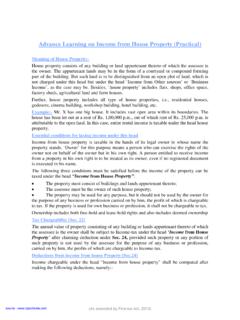
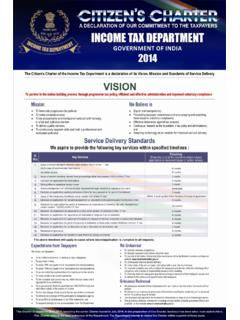
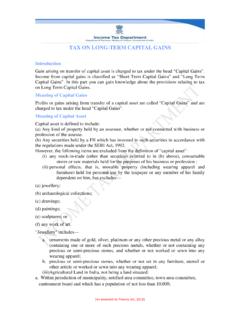
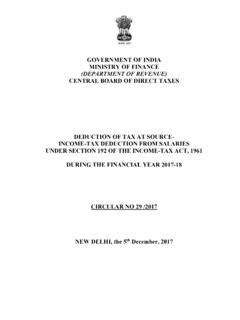

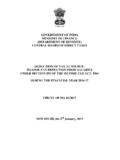
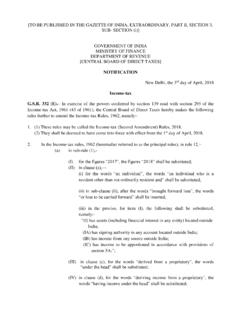
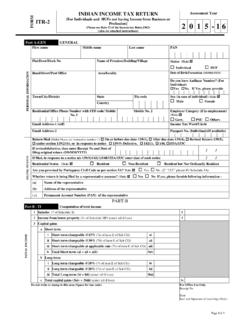
![FORM NO. 3CA [See rule 6G(1)(a)] Audit report …](/cache/preview/5/e/9/7/6/b/7/4/thumb-5e976b74d05a63207c471fc48a86f3e5.jpg)
